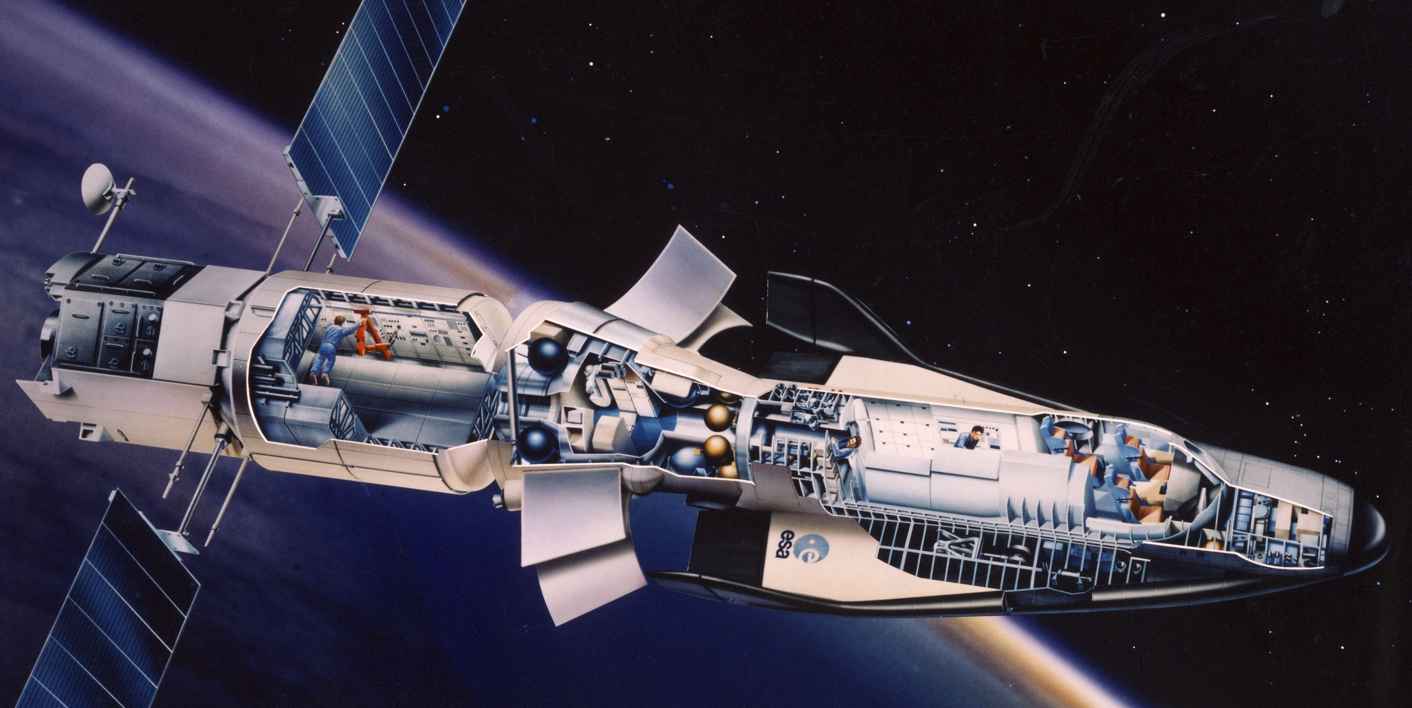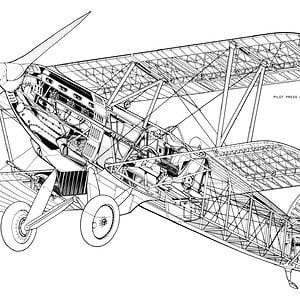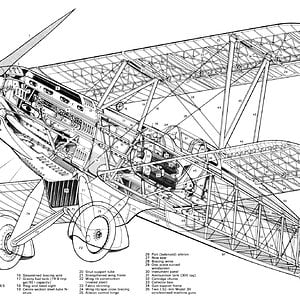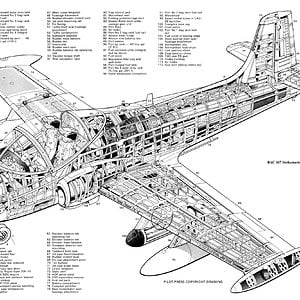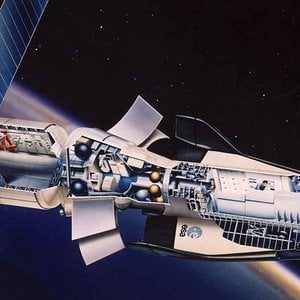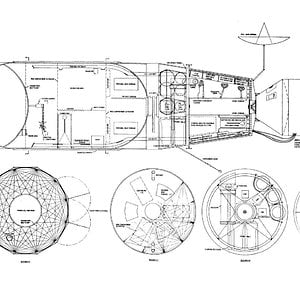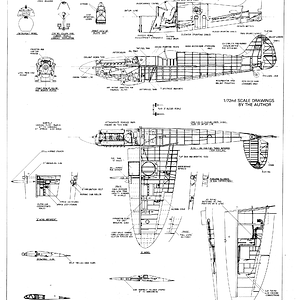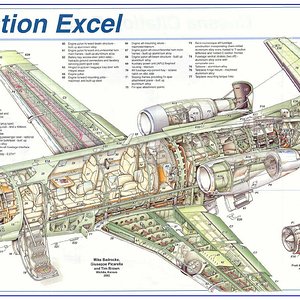Navigation
Install the app
How to install the app on iOS
Follow along with the video below to see how to install our site as a web app on your home screen.
Note: This feature may not be available in some browsers.
More options
You are using an out of date browser. It may not display this or other websites correctly.
You should upgrade or use an alternative browser.
You should upgrade or use an alternative browser.
The initial module of Columbus, the MTFF, docked with the proposed mini-shuttle Hermes. At this point the space station would be unpressurized and unmanned except when astronauts were retrieving its experiments, but the APM (which eventually evolved into the ISS module Columbus) would be attached later to add a small living space. Image source unknown, believed to be the ESA
What it was: A European effort to turn their contribution to the American space station Freedom into an independent space station of their own, hoisted into orbit by ESA rockets and serviced by an ESA shuttle.
Details: The European Space Agency signed on to Ronald Reagan’s suggested internationalization of the Freedom station right from the moment he made the offer in 1984. They had been developing the pressurized Spacelab module for use in the Space Shuttle’s cargo bay since the early 1970s, and now pushed for the new space station to build on components derived from their work. As part of this they started the Columbus project, which among other goals would have them make one such component—the Attached Pressurized Module (APM)—on their own for inclusion in the completed Freedom.
Another part of the project was to be semi-autonomous right from the initial planning, though. The Man-Tended Free Flying Platform (MTFF) was to have been a two-segment unmanned Spacelab module which would detach from Freedom and move to a nearby orbit. This would allow for sensitive, teleoperated microgravity experiments away from the noisy, manned Freedom and, a round of experiments completed, it would return for maintenance at the main station.
During the mid- to late-1980s, though, Freedom had a rough ride in the US Congress and the ESA started developing contingency plans for what to do with Columbus if the American station was cancelled. Couple this with massive increases in prices to use the Space Shuttle—then the Challenger disaster temporarily making its cargo bay unavailable at any price—and from 1989-92 these plans culminated in an entirely autonomous station that the Europeans would try if remaining part of the now downsized and re-named Alpha (AKA “Space Station Fred”) became too unpalatable.
The initial station would have been the unmanned MTFF, but now the experiments would have been retrieved by the ESA’s Hermes shuttle, which along with the Ariane-5 rocket had been approved as an unrelated project in 1987. In 1991 the three were melded into one big project.
Two suggested expansions of Columbus beyond its initial two modules. Image source unknown, believed to be the ESA. Click for a larger view.
The MTFF, Hermes, and the French launcher were to be joined by a fourth piece of the puzzle: the APM, now divorced from Alpha. Once the unmanned MTFF-based station was proven, the APM would be completed and launched on an Ariane-5 (or possibly in an US Shuttle’s cargo bay, if renting it turned out to be cheaper and more convenient). It would then dock with the MTFF to produce an entirely European manned facility, Columbus. The long-term, if somewhat nebulous, plan was then to add more and more modules as time went by.
Statistics on the Columbus are surprisingly hard to come by. Based on the actual ISS module that was derived from it, though, we can presume that its two working modules would totaled about 14 meters in length, with the power module and station-keeping ion engine at the MTFF end adding about another 5 meters. Its total mass would have been in the range of 25 to 30 tonnes, which would have made it a bit bigger than the Soviet Salyut stations, but less than 25% the size of Mir and about 6% the size the ISS. Accordingly it probably would have had the same sort of missions as the Salyuts, involving two or three astronauts for a few days up to several months.
The budget for the station was calculated at US$5.3 billion, including operations for five years.
What it was: A European effort to turn their contribution to the American space station Freedom into an independent space station of their own, hoisted into orbit by ESA rockets and serviced by an ESA shuttle.
Details: The European Space Agency signed on to Ronald Reagan’s suggested internationalization of the Freedom station right from the moment he made the offer in 1984. They had been developing the pressurized Spacelab module for use in the Space Shuttle’s cargo bay since the early 1970s, and now pushed for the new space station to build on components derived from their work. As part of this they started the Columbus project, which among other goals would have them make one such component—the Attached Pressurized Module (APM)—on their own for inclusion in the completed Freedom.
Another part of the project was to be semi-autonomous right from the initial planning, though. The Man-Tended Free Flying Platform (MTFF) was to have been a two-segment unmanned Spacelab module which would detach from Freedom and move to a nearby orbit. This would allow for sensitive, teleoperated microgravity experiments away from the noisy, manned Freedom and, a round of experiments completed, it would return for maintenance at the main station.
During the mid- to late-1980s, though, Freedom had a rough ride in the US Congress and the ESA started developing contingency plans for what to do with Columbus if the American station was cancelled. Couple this with massive increases in prices to use the Space Shuttle—then the Challenger disaster temporarily making its cargo bay unavailable at any price—and from 1989-92 these plans culminated in an entirely autonomous station that the Europeans would try if remaining part of the now downsized and re-named Alpha (AKA “Space Station Fred”) became too unpalatable.
The initial station would have been the unmanned MTFF, but now the experiments would have been retrieved by the ESA’s Hermes shuttle, which along with the Ariane-5 rocket had been approved as an unrelated project in 1987. In 1991 the three were melded into one big project.
Two suggested expansions of Columbus beyond its initial two modules. Image source unknown, believed to be the ESA. Click for a larger view.
The MTFF, Hermes, and the French launcher were to be joined by a fourth piece of the puzzle: the APM, now divorced from Alpha. Once the unmanned MTFF-based station was proven, the APM would be completed and launched on an Ariane-5 (or possibly in an US Shuttle’s cargo bay, if renting it turned out to be cheaper and more convenient). It would then dock with the MTFF to produce an entirely European manned facility, Columbus. The long-term, if somewhat nebulous, plan was then to add more and more modules as time went by.
Statistics on the Columbus are surprisingly hard to come by. Based on the actual ISS module that was derived from it, though, we can presume that its two working modules would totaled about 14 meters in length, with the power module and station-keeping ion engine at the MTFF end adding about another 5 meters. Its total mass would have been in the range of 25 to 30 tonnes, which would have made it a bit bigger than the Soviet Salyut stations, but less than 25% the size of Mir and about 6% the size the ISS. Accordingly it probably would have had the same sort of missions as the Salyuts, involving two or three astronauts for a few days up to several months.
The budget for the station was calculated at US$5.3 billion, including operations for five years.

